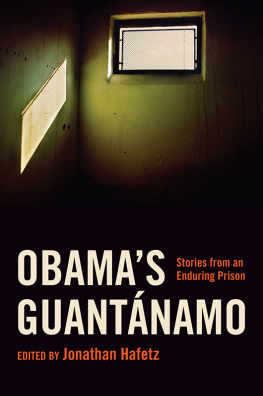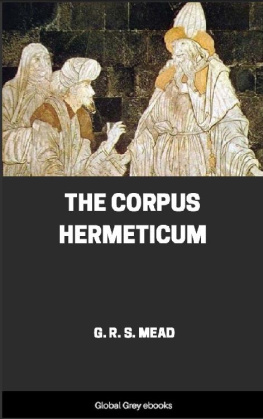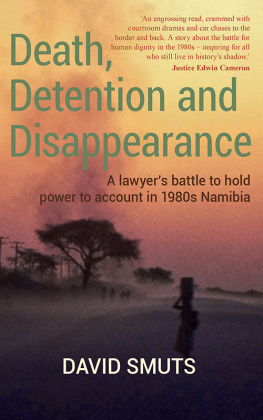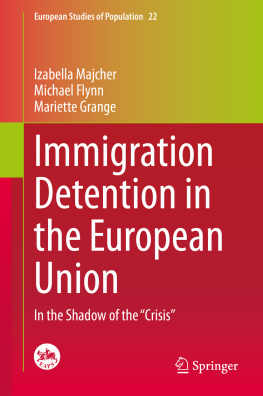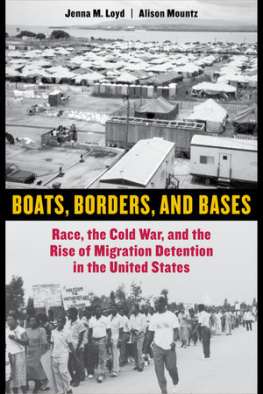Thank you for buying this ebook, published by NYU Press.
Sign up for our e-newsletters to receive information about forthcoming books, special discounts, and more!
Sign Up!
About NYU Press
A publisher of original scholarship since its founding in 1916, New York University Press Produces more than 100 new books each year, with a backlist of 3,000 titles in print. Working across the humanities and social sciences, NYU Press has award-winning lists in sociology, law, cultural and American studies, religion, American history, anthropology, politics, criminology, media and communication, literary studies, and psychology.
Habeas Corpus after 9/11
Habeas Corpus after 9/11
Confronting Americas
New Global Detention System
Jonathan Hafetz
NEW YORK UNIVERSITY PRESS
New York and London
www.nyupress.org
2011 by New York University
All rights reserved
Library of Congress Cataloging-in-Publication Data
Hafetz, Jonathan.
Habeas corpus after 9/11 : confronting Americas
new global detention system / Jonathan Hafetz.
p. cm.
Includes bibliographical references and index.
ISBN 9780814737033 (cl : alk. paper)ISBN 9780814773437 (ebook)
1. Habeas corpusUnited States. 2. Detention of personsUnited States.
3. TerrorismUnited StatesPrevention. 4. Combatants and noncombatants
(International law) 5. Detention of personsCubaGuantnamo Bay Naval
Base. 6. Prisoners of warLegal status, laws, etc.CubaGuantnamo Bay
Naval Base. 7. Guantnamo Bay Detention Camp. I. Title.
KF9011.H34 2010
345.73056dc22 2010026424
New York University Press books are printed on acid-free paper,
and their binding materials are chosen for strength and durability.
We strive to use environmentally responsible suppliers and materials
to the greatest extent possible in publishing our books.
Manufactured in the United States of America
10 9 8 7 6 5 4 3 2 1
To Martha, Ben, and Sam
Contents
Acknowledgments
First I would like to thank the Brennan Center for Justice at New York University School of Law, my professional home for three years, which generously provided me with the opportunity and the support to write this book.
My thanks also to Baher Azmy, Emily Berman, Mark Denbeaux, Eric Freedman, Frederick Hafetz, Aziz Huq, Joe Margulies, Gabor Rona, and David Udell for their thoughtful comments and suggestions on draft versions of the book; to Margaret Rocco for her wonderful assistance with research; to Zak Shirley for all his help in the last stages; and to all my former colleagues at the ACLUs National Security Project for their inspiration, ideas, and support in challenging the illegal network of prisons beyond the law that are this books subject. All errors, of course, remain my own.
In addition, I want to extend my gratitude to my editor, Debbie Gershenowitz, as well as to Gabrielle Begue, Despina Gimbel, and everyone else at NYU Press whose commitment and assistance made this book possible.
Finally, my deepest appreciation to my wife, Martha, and sons, Ben and Sam, to my parents, Fred and Myra, and to Jerry and Risa Pollack for their love and support.
Introduction
The U.S. detention center at the Guantnamo Bay Naval Base in Cuba has long been synonymous with torture, secrecy, and the abuse of executive power. It has come to epitomize lawlessness in the eyes of the world. Created in the name of protecting the country, Guantnamo has weakened it, undermining Americas security as well as well as its values.
For too long, however, Guantnamo has been viewed in isolation, overshadowing other abuses and concealing broader shifts in Americas national security policy since September 11, 2001. Guantnamo was never simply a prison, nor was it hermetically sealed. Rather, Guantnamo was part of a larger, interconnected global detention system that included other military prisons such as the Bagram Air Base in Afghanistan, secret CIA jails, and the transfer of prisoners to other countries for torture. This system encompassed even the military detention of individuals arrested inside the United States, whom President George W. Bush claimed he could hold indefinitely without charge as part of a war on terrorism without geographic or temporal bounds. Guantnamo, in short, was like an island in an archipelago of U.S. detention operations: the most visible example of a larger prison system designed to operate outside the law.
This system grew out of a series of decisions by Bush administration officials following the terrorist attacks of September 11. The Bush administration wanted to treat terrorism as an armed conflict rather than criminal activity and yet also wanted to avoid the limits that the law imposes on the detention and treatment of prisoners during wartime. In addition, the administration tried to create a category of prisoners without legal protections in order to justify a state-sanctioned policy of torture and other cruel and inhuman treatment. In this newly envisioned detention system, prisoners could be held indefinitely, potentially forever, without charge and without a meaningful hearing. The only trials were to be held in jerry-rigged military commissions that fell far short of constitutional and international standards. This system was intended to exist not only beyond the law but also beyond the reach of any court, as the Bush administration took every possible measure to prevent judges from examining its detention and treatment of prisoners held as enemy combatants. Its goal was to imprison and interrogate without constraint or scrutiny.
The U.S. governments detention policies sparked intense legal battles. At the center of many of them was habeas corpus. Habeas corpus has long served as the preeminent safeguard of individual liberty and check against arbitrary government power by mandating that the state justify a prisoners detention before a judge. The use of habeas, however, had changed over time, becoming principally a remedy for prisoners challenging their convictions based on constitutional defects at trial. After 9/11, habeas resumed its historic function as a remedy for executive imprisonment without trial. In three decisions since 9/11, the United States Supreme Court vindicated the importance of habeas by upholding the right of Guantnamo detainees to access U.S. courts, including two cases in which Congress had tried to strip the detainees of that right. In these rulings, the Court rejected the presidents claim that he could detain prisoners without legal protections or hold them indefinitely without judicial review simply by imprisoning them outside the United States.
These victories, however, were both limited and incomplete. Although the Supreme Court rejected the notion that the Constitution necessarily stops at Americas shores and upheld the right of Guantnamo detainees to habeas corpus, it did not guarantee judicial review of detention operations at other overseas prisons. The Court also did not grapple with other important questions in these cases or in its other war on terror decisions. It did not, for example, address who could be detained as an enemy combatant other than someone who was captured in Afghanistan while engaging in hostilities against U.S. or allied troops on behalf of Taliban forces. The Court thus failed to take on the presidents claim that the entire world was a battlefield and that even individuals who were arrested in civilian settings in the United States and who never took part in hostilities on a battlefield (or anywhere else), could be treated as combatants and thereby denied the right to a criminal trial.



